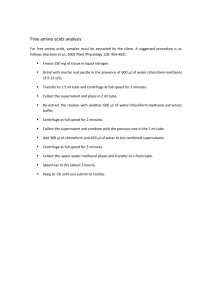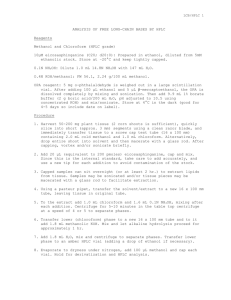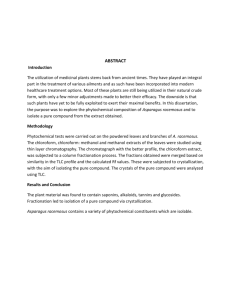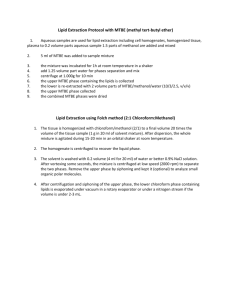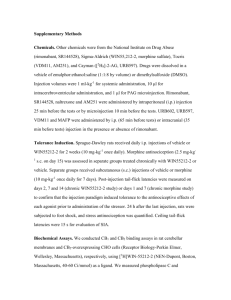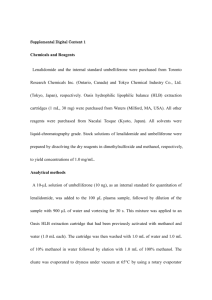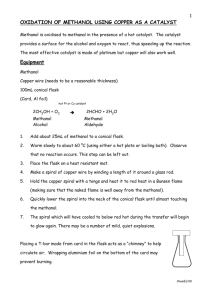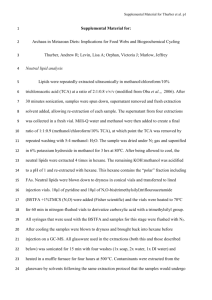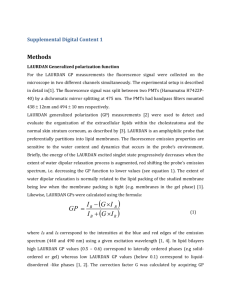MeOH/CHCL3 Precipitation
advertisement
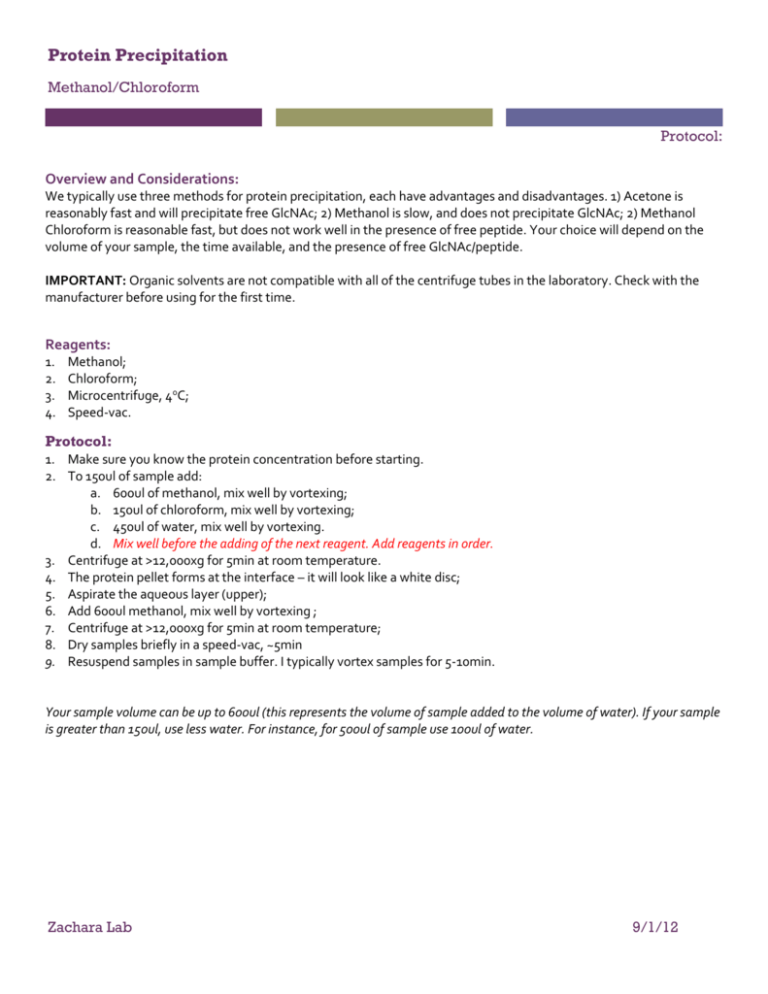
Protein Precipitation Methanol/Chloroform Protocol: Overview and Considerations: We typically use three methods for protein precipitation, each have advantages and disadvantages. 1) Acetone is reasonably fast and will precipitate free GlcNAc; 2) Methanol is slow, and does not precipitate GlcNAc; 2) Methanol Chloroform is reasonable fast, but does not work well in the presence of free peptide. Your choice will depend on the volume of your sample, the time available, and the presence of free GlcNAc/peptide. IMPORTANT: Organic solvents are not compatible with all of the centrifuge tubes in the laboratory. Check with the manufacturer before using for the first time. Reagents: 1. 2. 3. 4. Methanol; Chloroform; Microcentrifuge, 4oC; Speed-vac. Protocol: 1. Make sure you know the protein concentration before starting. 2. To 150ul of sample add: a. 600ul of methanol, mix well by vortexing; b. 150ul of chloroform, mix well by vortexing; c. 450ul of water, mix well by vortexing. d. Mix well before the adding of the next reagent. Add reagents in order. 3. Centrifuge at >12,000xg for 5min at room temperature. 4. The protein pellet forms at the interface – it will look like a white disc; 5. Aspirate the aqueous layer (upper); 6. Add 600ul methanol, mix well by vortexing ; 7. Centrifuge at >12,000xg for 5min at room temperature; 8. Dry samples briefly in a speed-vac, ~5min 9. Resuspend samples in sample buffer. I typically vortex samples for 5-10min. Your sample volume can be up to 600ul (this represents the volume of sample added to the volume of water). If your sample is greater than 150ul, use less water. For instance, for 500ul of sample use 100ul of water. Zachara Lab 9/1/12
